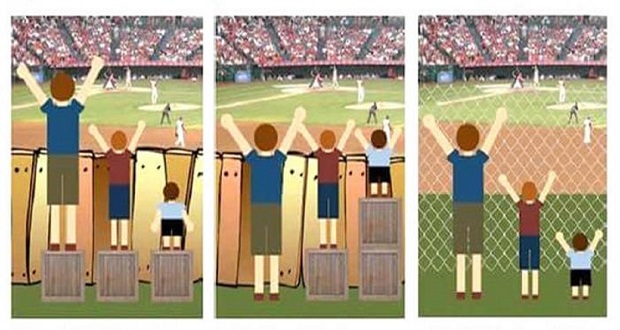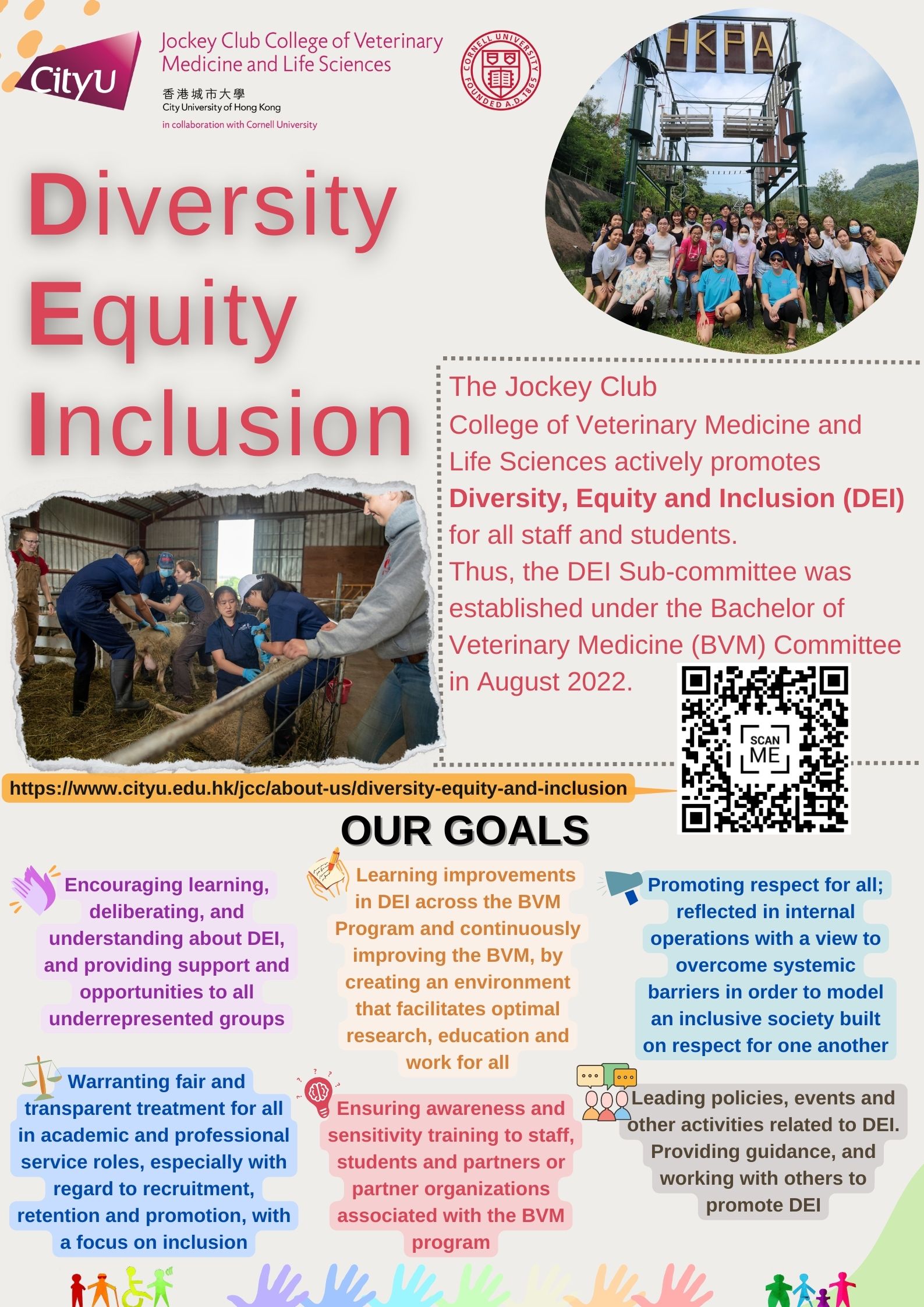
The Jockey Club College of Veterinary Medicine and Life Sciences (JCC) actively promotes Diversity, Equity and Inclusion (DEI) for all of our staff and students. To this end, the JCC DEI Committee, reporting to the JCC Executive Committee has been established to assist the JCC in:
- Encouraging learning, deliberating, and understanding about DEI, and providing support and opportunities to all under-represented groups
- Leading improvements in DEI across all undergraduate and post-graduate programs in the JCC by creating an environment that facilitates optimal research, education and work for all
- Continuously improving the BVM Program, by creating an environment that facilitates optimal research, education and work for all
- Promoting respect for all; reflected in all internal operations with a view to overcome systemic barriers in order to model an inclusive society built on respect for one another
- Ensuring awareness and sensitivity training to staff and students in JCC
- Warranting fair and transparent treatment for all in academic and professional service roles, especially with regard to recruitment, retention and promotion with a focus on inclusion
- Leading policies, events and other activities related to promotion of DEI
- Working alongside other JCC committees, when required to provide guidance on specific DEI issues that impact workplace complexities
If any of our staff or students have concerns or questions related to DEI matters, please feel free to contact Prof. McElligott as Chair, or other members of the committee. Any correspondence that we receive will be treated as strictly confidential.
Constitution
The DEI Sub-committee composition will include at least 8 members from diverse communities:
- 4 members nominated by the Dean, 4 members nominated by the Associate Dean & Director of Veterinary Affairs
- The number of male and female members will as near as possible to equal
- There will be at least one undergraduate student representative
- Attending scheduled meetings as often as possible
- Wholeheartedly championing inclusivity related to within JCC DEI activities
- Self-reflection and awareness, to ensure that the Committee itself is representative and inclusive
Membership list
Chair: |
Prof. Alan McELLIGOTT, Associate Professor (PH) |
Ex Officio: |
Prof. Vanessa BARRS, Dean, Chair Professor (JCC) |
Prof. Gigi LO, Associate Professor (BMS) |
|
Prof. Kingston MAK, Associate Professor (BMS) |
|
Prof. Xiaowei ZHU, Assistant Professor (NS) |
|
Members: |
Prof. Pawel BECZKOWSKI, Associate Dean of Teaching and Learning (JCC) |
Prof. Kwan Ting, CHOW, Assistant Professor (BMS) |
|
Prof. Priscilla FREITAS GERBER, Associate Professor (PH) |
|
Prof. Eloi GUARNIERI, Clinical Assistant Professor (VCS) |
|
Ms. George HODGSON, Early Career Researcher Representative |
|
Dr. Cherry LEE, Scientific Officer (JCC) |
|
Mr. Richard SHAH, Supervisor (PH) |
|
Ms. Devika SURESH, BVM student |
|
Secretary: |
Ms. Sonia WONG, Executive Officer (JCC) |
Minutes
| Year | Meeting | Date | Minutes |
| 2022 | 1st | 6 October 2022 | JCC BVM DEI Meeting 1 Minutes |
| 2022 | 2nd | 20 December 2022 | JCC BVM DEI Meeting 2 Minutes |
| 2023 | 3rd | 12 April 2023 | JCC BVM DEI Meeting 3 Minutes |
| 2023 | 4th | 20 June 2023 | JCC BVM DEI Meeting 4 Minutes |
| 2023 | 5th | 12 September 2023 | JCC BVM DEI Meeting 5 Minutes |
| 2023 | 6th | 20 December 2023 | JCC BVM DEI Meeting 6 Minutes |
| 2024 | 7th | 25 March 2024 | JCC BVM DEI Meeting 7 Minutes |
 |
| Left = Equality, everyone has been provided with a box to see over the barrier. Middle = Equity, boxes have been provided based on need. Right = Inclusion, looking at how to change the environment and remove all barriers |
| Reference Valbrun, V. (2017) Equity vs. Equality: Eliminating Opportunity Gaps in Education. http://www.theinclusionsolution.me/equity-vs-equality-eliminating-opportunity-gaps-education/ |
